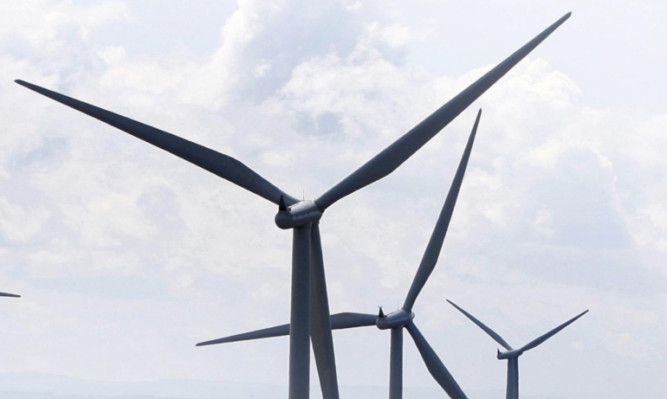A MAJORITY of councils in Scotland including Fife and Perth and Kinross cannot say for sure how many wind turbines are up and running in their area.
Statistics requested using freedom of information legislation reveal only 10 local councils can say for sure how many turbines they have.
Others have stated they do not know or are only able to provide estimates based on planning applications.
Both Angus and Dundee councils were able to give a definitive answer, the former stating there are 20 turbines in the local authority area and the latter revealing they host nine.
However, Perth and Kinross could only “estimate” that there are 158 turbines running in the area while Fife Council estimated the region has 22.
Aberdeenshire officials estimate there are 284 operational turbines in their local authority area.
A total of 10 other councils either failed to respond or said they had no database including such details.
The revelations come just days after the Scottish Government overturned a controversial wind energy proposal which had originally been refused by a local authority.
Falkirk Council planners had said a scheme to build 13 huge turbines at Stoneridge would have “a major adverse visual impact on the landscape”.
Officials ruled that the windfarm would be visible from parts of Fife, as well as the Pentlands, the Ochils, Kilsyth Hills and the M8 motorway.
However, a Scottish Government planning reporter overruled the decision to refuse the application, meaning it can now be constructed.
Opponents were horrified by thedecision pointing out that the reporter himself noted the development wouldbe “a noticeable feature in a mainlypleasant, varied and generally tranquil landscape”.
He also pointed out that noise levels generated would at times breach recommended limits for residents, but nevertheless insisted the concerns put forward by Falkirk Council “do not justify refusal of the application”.
Mid Scotland and Fife MSP Murdo Fraser is convener of the Scottish Parliament’s energy committee.
He is concerned by the amount ofapplications finding favour and called for efforts to limit the number of turbines being set up.
“I find it astonishing that most councils can’t put a number on how many wind turbines are in the ground and working,” Mr Fraser said.
“How are we supposed to build a sensible picture, and keep the number of windfarms under control in the face of an SNP obsession, if we can’t say how many are up and running?
“We need the Scottish Government and councils to present an accurate, up-to-date number, with the facility to change that as and when new turbines are built.
“It is not good enough to shrug shoulders and say we don’t know this should not be a difficult task.”
Mr Fraser accused the Scottish Government of playing fast and loose with local opinion in a desperate bid to meet stringent renewable energy targets.
“We know the SNP will wave a windfarm through even if local people say no, planning experts say no, and locally-elected representatives say no,” the MSP continued.
“In Falkirk we see yet another example of the Scottish Government ignoring concerns just to ensure its ludicrous renewable energy target can be achieved.
“The planning reporter himself even tips his hat to these fears, but overrules the council anyway.”
Mr Fraser believes the rush to provide renewable energy risks destroying Scotland’s world-famous reputation for unspoiled scenery.
“This is a worrying practice that has to be stopped before swathes of Scotland’s landscape are completely ruined for the sake of an intermittent and unreliable energy source,” the MSP added.
l A new alliance of Scottish anti-windfarm campaigners has been launched to fight the Scottish Government’s wind policy.
Promising stronger, more radical action, it comprises thousands of activists from across Scotland.
Its formation follows an anti-wind protest at the SNP’s annual conference in Perth in October, when over 300 demonstrators marched in the streets.
dlord@thecourier.co.uk
